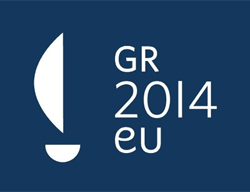Development
The legal basis of the Development policy is Title XX and Part IV of the Treaty establishing the European Community.
Nearly half the money spent to help poor countries comes from the European Union and its member states, making it the world’s biggest aid donor. But development policy is about more than providing clean water and surfaced roads, important though these are. The Union also uses trade to drive development by opening its markets to exports from poor countries and by encouraging them to trade more with each other.
Trade and aid are the twin pillars of EU development policy. They come together as the Union assumes its share of responsibility to help developing countries fight poverty and integrate into the globalised world economy.
Beginning in 1971 under its ‘generalised system of preferences’ (GSP), the Union has reduced or removed tariffs and eliminated quotas on most of its imports from developing countries.
The special trading relationship between the Union and its 78 partners in the Africa-Caribbean-Pacific (ACP) group has been considered a model for how rich countries can open their markets to poor ones.
The EU’s development strategy also focuses on financial and technical assistance to improve the basic physical and social infrastructures and productive potential of poor nations and to strengthen their administrative and institutional capacities.
The Union is combining its trade and aid mix in a new way in the next generation of partnership agreements it is negotiating with the ACP countries. These are due to be in place by 2008. The idea is to help them integrate with their regional neighbours as a step towards global integration. At the same time, the EU will continue to work to open its markets and remove barriers to exports from the ACP group.
At global level, the Union strongly supports the decision taken at the world trade negotiations, known as the Doha Development Agenda, to strengthen the administrative and managerial capacity of poor countries and thus help them take advantage of trading opportunities created by the negotiations.
The European Union and its member states pay out more than €30 billion a year in public aid to developing countries. Of this amount, about €6 billion is channelled through the EU. The Union has committed itself to raising the annual total from €30 to €39 billion by 2006.
Most of the EU’s aid is in the form of non-repayable grants.
A limited amount of soft loans and investment capital is made available by the European Investment Bank (EIB) the EU’s long-term funding body. The EIB made loans to developing countries outside Europe worth €3.6 billion in 2003.






 Svejo
Svejo Twitter
Twitter Link4e
Link4e Pipe
Pipe Web-bg
Web-bg Bghot
Bghot Lubimi
Lubimi Novinitednes
Novinitednes Ping
Ping Facebook
Facebook Myspace
Myspace Mix
Mix Del.ico.us
Del.ico.us Reddit
Reddit Digg
Digg Stumbleupon
Stumbleupon Myweb Yahoo
Myweb Yahoo Google Bookmarks
Google Bookmarks Google Buzz
Google Buzz

